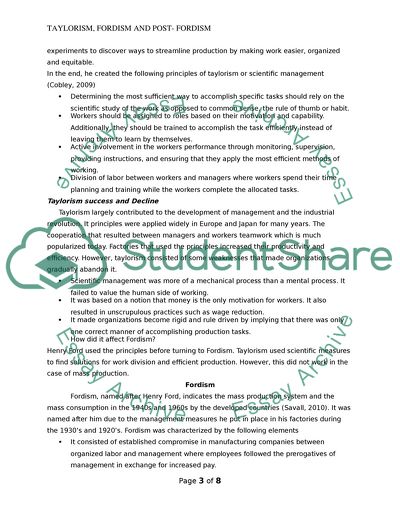Cite this document
(“Critically evaluate the view that 'Taylorism' and 'fordism' have been Coursework”, n.d.)
Critically evaluate the view that 'Taylorism' and 'fordism' have been Coursework. Retrieved from https://studentshare.org/sociology/1680506-critically-evaluate-the-view-that-taylorism-and-fordism-have-been-replaced-by-post-fordism-as-the-ruling-paradigm-of-work-and-employment-in-capitalist-societies
Critically evaluate the view that 'Taylorism' and 'fordism' have been Coursework. Retrieved from https://studentshare.org/sociology/1680506-critically-evaluate-the-view-that-taylorism-and-fordism-have-been-replaced-by-post-fordism-as-the-ruling-paradigm-of-work-and-employment-in-capitalist-societies
(Critically Evaluate the View That 'Taylorism' and 'fordism' Have Been Coursework)
Critically Evaluate the View That 'Taylorism' and 'fordism' Have Been Coursework. https://studentshare.org/sociology/1680506-critically-evaluate-the-view-that-taylorism-and-fordism-have-been-replaced-by-post-fordism-as-the-ruling-paradigm-of-work-and-employment-in-capitalist-societies.
Critically Evaluate the View That 'Taylorism' and 'fordism' Have Been Coursework. https://studentshare.org/sociology/1680506-critically-evaluate-the-view-that-taylorism-and-fordism-have-been-replaced-by-post-fordism-as-the-ruling-paradigm-of-work-and-employment-in-capitalist-societies.
“Critically Evaluate the View That 'Taylorism' and 'fordism' Have Been Coursework”, n.d. https://studentshare.org/sociology/1680506-critically-evaluate-the-view-that-taylorism-and-fordism-have-been-replaced-by-post-fordism-as-the-ruling-paradigm-of-work-and-employment-in-capitalist-societies.


